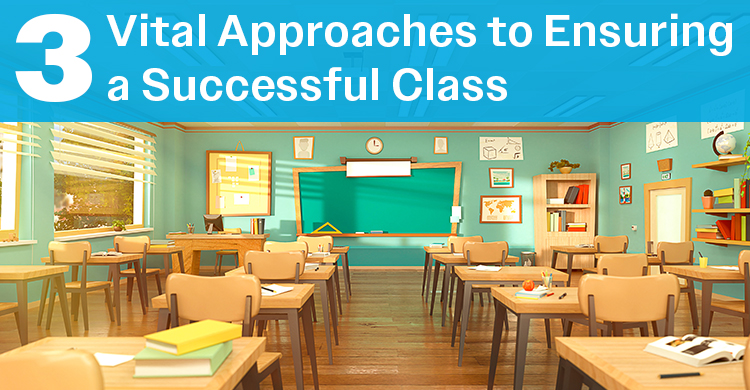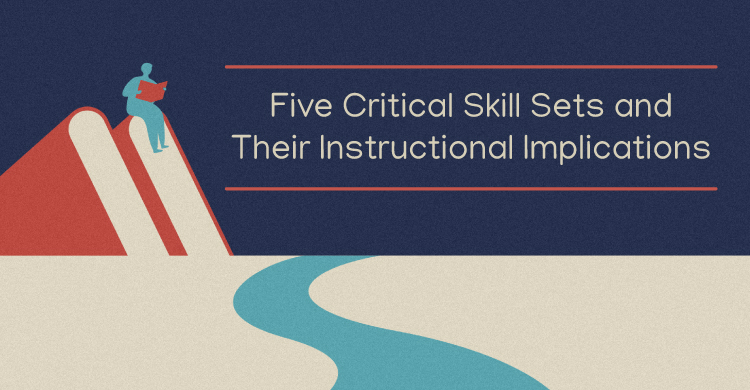This is the first post in a series on student-led, small-group discussions. Over the course of the next several months, this series will explore some of the challenges to effective small-group discussions and how to address them. See all posts under Small Groups, Big Discussions.
What is the difference between teacher-led and student-led discussions? A short response is that in teacher-led discussions, the teacher typically asks questions, calls on students to respond, and manages the flow of conversations, while in student-led discussions, the students develop their own questions, work collaboratively, and facilitate the flow of their talk.
Many students want to discuss in small groups but often are not afforded the opportunity. Typically, the teacher and teacher-led activities dominate classroom conversations (Kamil et al., 2008; Nystrand et al., 2003; Mercer, 1995). Kamil and colleagues (2008) share that “discussion currently accounts for an average of only 1.7 minutes per 60 minutes of classroom instruction.” Yet, when I work with students across the country on student-led discussions, they typically say they think their educational experience could be improved if given more frequent opportunities to talk about academic content with their peers.
Why small-group discussion is important
Cameron and colleagues (2012) found that students who experience student-led discussions indicate they are more fun; and Certo and colleagues (2010) inform us that when students have been taught how to talk about text, they have a reason to apply the strategies they have been taught. The application of the skill into practice is often most challenging. Without authentic practice, the teacher’s instruction of important strategies is left to chance if and how it will be applied.
When I asked a group of ninth-grade students their thoughts about small-group discussion, they had lots to say. Rory said it helps him understand different perspectives. Alyssa’s confidence increases when she engages in academic discussion with a small group of her peers. While Rahma enjoys responding to teachers’ questions in class, she realizes that she needs to monitor her speaking time when engaging in dialogue in small groups, to allow other students the opportunity to participate.
“It’s hard to speak out in large groups,” Maddie says.
One thing these students have in common is that they gain deeper insights into the text and it makes their reading more purposeful if they know they will get a chance to talk within their groups. They come prepared with sticky notes and placeholders marked in their books. Sitting at the edge of their chairs, they cannot wait for their appetite to discuss the text with their peers to be fed.
This group of students’ comments and perceptions align with the results of wider research studies mentioned earlier.
The challenges to effective student discussion
So, why aren’t students afforded more opportunities to talk about important content with their peers in small groups?
In my consultation work, teachers and school leaders often share their challenges with trying to increase student-led discussions in classrooms and are searching for answers to address these hurdles.
The issues and suggestions I will share in this blog series will help troubleshoot the most common concerns I have seen, experienced, or problem-solved over the years. Through these monthly blogs, it is my hope that you will be able to better resolve some of the challenges. You can look for each post at the end of its scheduled month.
Small Groups, Big Discussions Schedule:
| Month | Topic |
| April | Helping students ask questions |
| May | Getting all students to contribute |
| June | Preparing for discussions |
| July | Preventing discussions from going off-topic |
| August | Classroom routines that lead to more student discussion |
| September | Group membership skills |
| October | Scheduling discussions |
| November | Giving individual grades for small group discussion |
| December | Providing feedback |
| February | Helping K–5 students be more self-directed in discussions |
| March | Bringing discussions to closure |
Read the next blog post, “Helping Students Ask Questions,” or buy the book Deep Discourse for a more comprehensive plan on how to integrate student-led, small-group discussions in the classroom.
Sandi Novak, an education consultant, has served as an assistant superintendent, principal, and teacher. With more than 35 years of experience in schools, Sandi provides professional development on a number of topics and initiatives, such as coaching principals and teacher leaders in developing strong literacy instruction, using data to monitor professional learning implementation, and developing school improvement plans focused on maximizing achievement for all students in literacy. Visit Sandi’s website, join her professional LinkedIn community, or send her a tweet @snovak91335.
References:
Cameron, S., Murray, M., Hull, K., & Cameron, J. (2012). Engaging fluent readers using literature circles. Literacy Learning: The Middle Years, 20(1), 1–8.
Certo, J., Moxley, K., Reffitt, K., & Miller, J. A. (2010). “I learned how to talk about a book”: Children’s perceptions of literature circles across grade and ability levels. Literacy Research and Instruction, 49(3), 243–263.
Kamil, M. L., Borman, G. D., Dole, J., Kral, C. C., Salinger, T., & Torgesen, J. (2008). Improving adolescent literacy: Effective classroom and intervention practices. Washington, DC: Institute of Education Sciences.
Mercer, N. (1995). The guided construction of knowledge: Talk amongst teachers and learners. Clevedon, England: Multilingual Matters.
Novak, S., & Slattery, C. (2016). Deep Discourse: A Framework for Cultivating Student-Led Discussions. Alexandria, VA: ASCD.
Nystrand, M., Wu, L. L., Gamoran, A., Zeiser, S., & Long, D. A. (2003). Questions in time: Investigating the structure and dynamics of unfolding classroom discourse. Discourse Processes, 35(2), 135–198.
[author_bio id=”1117″]






